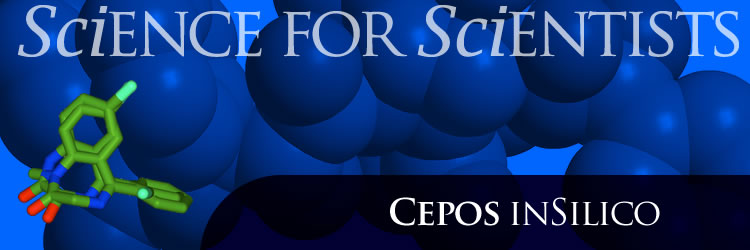About Cepos
Cepos InSilico was created in 2002 to make the science developed in the Parashift Project readily available and to support further research and development. (The Parashift Project was born at the 2002 EuroQSAR conference at Bournemouth in the UK. It represents a concerted attempt to break out of the mold of conventional atomistic modeling techniques with methods based on local molecular surface properties.) As a result, today Cepos InSilico's surface-based modeling techniques implemented in ParaSurf™ provide in silico screening, modeling and simulation techniques designed to give accurate, generally applicable predictions of biological activity, reactivity, ecological impact and ADME and physical properties.
Researchers from the Friedrich-Alexander-University Erlangen-Nuernberg in Germany and Cepos’ own staff have developed the products marketed by Cepos InSilico GmbH. Their expertise provides the uniquely powerful scientific background behind today's Cepos technology. In January 2018, the Cepos InSilico Group was restructured, so that operations are now centered on Cepos InSilico GmbH in Erlangen and all business will be conducted by the GmbH.
A highlight of the CEPOS software offering is EMPIRE™, a modern, highly parallel semiempirical molecular-orbital program that has been used to for calculations on 100,000 atoms using up to 4,000 cpu-cores. [1,2] EMPIRE™ represents the ideal high-throughput front end for ParaSurf™.
[1] EMPIRE: A highly parallel semiempirical molecular orbital program: 1: Self-Consistent Field Calculations, M. Hennemann and T. Clark, J. Mol. Model. 2014, 20, 2331, https://doi.org/10.1007/s00894-014-2331-4.
[2] EMPIRE: A highly parallel semiempirical molecular orbital program: 2: Periodic boundary conditions, J. T. Margraf, M. Hennemann, B. Meyer and T. Clark, J. Mol. Model. 2015, 21, 144, https://doi.org/10.1007/s00894-015-2692-3.

